
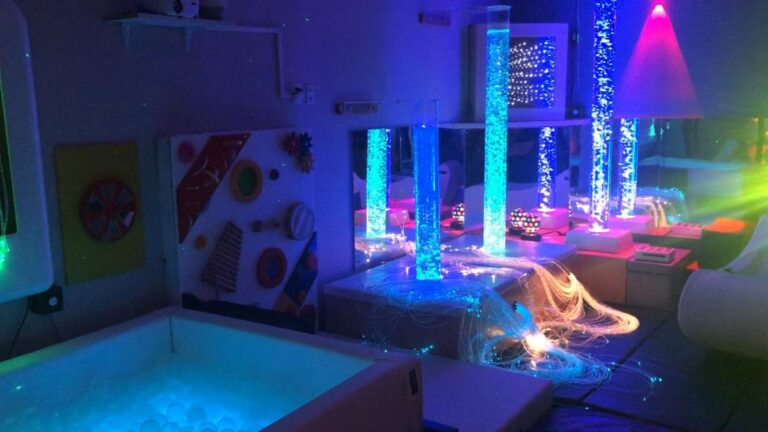
New Beginnings at Mountain Shadows
by Sheryl Wilde
“We want them to thrive, not just survive.”
– Donna Heard, Program Director, New Beginnings Therapeutic Day Program
Fairview Developmental Center, a state-operated institution located on 114 acres of land in Orange County, opened in 1959 and at its peak served over 2700 people with developmental and intellectual disabilities providing general acute care, skilled nursing care, intermediate care, and acute crises services. In 2015 Governor Jerry Brown ordered it closed by 2021 and all the residents had to be transitioned to new community-based homes.
Once they had been moved to new homes in the community, they required a full-continuum of services, including 24-hour health care supervision, such as structured medical, nursing and social/behavioral care. They also needed services such as training in daily living activities, vocational skill development, leisure, academic, communication, mobility, socialization and community integration.
The transitions took place in several thoughtfully planned and coordinated moves. When it came time to move the last wave of residents, those considered to be the most challenging to place in the community due to significant behavioral issues, there were few to no options for placement or other services.
“Around the 1980’s, there were thousands of individuals living in state-run facilities,” says Donna. “There seemed to be a philosophy that if someone wasn’t born perfect, they were institutionalized. Over time, this approach was changed and the individuals were integrated into society.
“The states depopulated the institutions in waves, beginning with residents who would most easily transition into the community. After many years, by April 2018, the state facilities were down to 111 residents that needed to be placed.
“These were the residents that were not able to fit into existing community programs. These individuals had a history of severely challenging behaviors – aggression, violence. There was a stigma attached to them that they ‘were there for a reason’.
“There were no systems in place for these people. They were in limbo. As part of this process in collaboration with San Diego Regional Center, Mountain Shadows stepped up and designed a day program to serve these individuals. We call that program New Beginnings.

Karen and Carlos at the
Aktion Club Annual Conventio
“We’ve used the symbol of a daffodil for our New Beginnings program. The daffodil symbolizes rebirth and new beginnings.” It is one of the first perennials to bloom in spring, after the winter frost.
“What we’ve done is to create a program grounded in a framework of positive psychology, which is so different than the world these individuals have seen. In traditional psychology, we look at what’s wrong with the individual and how do we treat that. In positive psychology, we want to know, ‘What helps people to thrive?’
“We say, ‘Let’s look at the people who are doing well. Especially the people who are doing well when the odds are stacked against them. What are they doing that’s different? What does that tell us about how we can help everyone?’ Then we lean heavily into the proactive strategies that prevent behaviors versus reacting to problems once they happen.
“It’s important to understand that we are blending philosophies here in this program. We provide services that are person-centered and humanistic, in a system that has historically prescribed only a behavioral model to treat these people that have issues.
“An example I use with staff so they understand the difference between the two is, I tell them, ‘Hey look, say you go home to your spouse and you’re very upset. You’re crying and you’re distressed’.
“If you had a horrible day and you say to your partner, ‘Can I have a hug? I just really need a hug.’
“What if your partner says back to you, ‘Oh, you’ll get a hug when you’re happy.’
“How would that go over? First be happy, then I’ll give you a hug. That’s what we’re teaching when we apply these really rigid responses to very complex situations and complex people. A lot of people want answers for every situation. And I say, ‘I can’t give you that, because we’re not training dogs and dolphins.’ Behaviorism came out of animal research and we are not that way.
“It’s not to say they’re not wonderful tools. We use them here. But we’ve worked a lot on creating interventions that are trauma-informed that account for people’s emotions, because emotions are data too. They really are.”
One of the many ways New Beginnings is on the leading-edge of helping these individuals thrive is by integrating multi-sensory environments, which are relaxing spaces that help reduce agitation and anxiety, help reduce challenging behaviors, and complement occupational therapy. Sensory integration therapy is used in working with clients with learning disabilities, mental health issues, autism, brain injury, and the elderly.
“Our multi-sensory integration rooms are extremely beneficial for people who are not neuro-typical. Our goal is to access all the different senses in a way where the participant is able to seek out and control the level of sensory input they require. This can provide a lot of benefits for improving their quality of life.”
Multi-Sensory Environments are used to educate, stimulate, relax, calm or energize by adapting lighting, atmosphere, sounds, smells and textures to the needs of each client at the time of use.
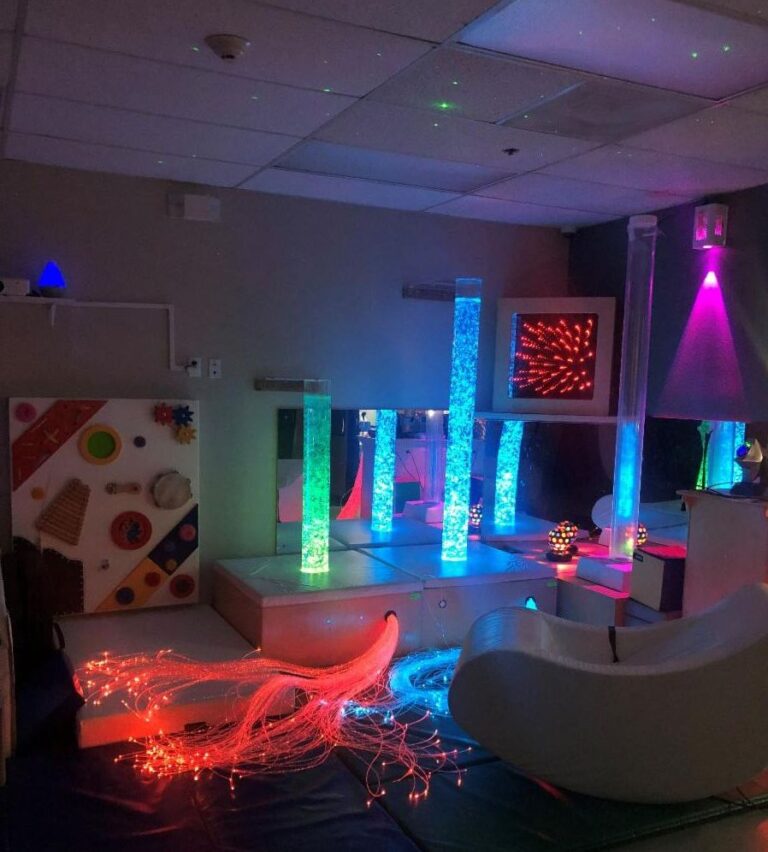
“Donna worked hard to get this state-of-the-art equipment for Mountain Shadows,” says Wade Wilde, Executive Director/CFO, Mountain Shadows Support Group. “The equipment, valued at over $75,000, was donated by the State of California when they closed the Fairview Developmental Center.”
The New Beginnings Multi-Sensory Room utilizes a myriad of equipment that can help clients reduce anxiety and agitation, stimulate reactions, encourage learning and development, and much more.
Here are a few of the therapeutic tools New Beginnings is using to benefit clients:
Fiber Optics – light sprays and curtains used for mood elevation and relaxation, to increase focus, and to enhance color recognition.
Bubble Tubes – to provide feedback and stimulate the visual system, facilitate clients’ ability to track objects, recognize colors, and relax.
Shimmering Curtain – a spectacular waterfall of shimmering color, which is a visually engaging and tactile experience for clients.
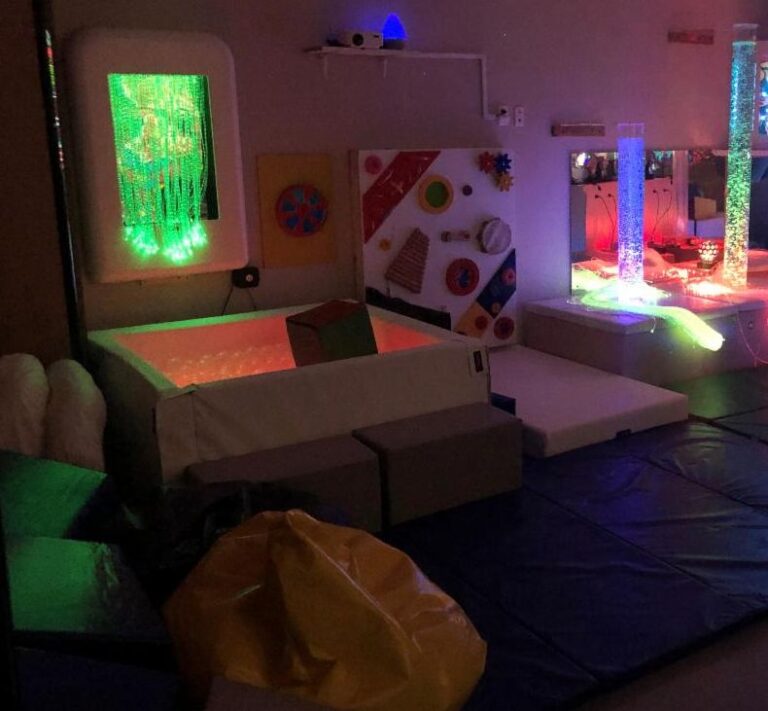
Vibroacoustic Ball Pool – provides vibrotactile input and proprioceptive feedback. Proprioception is the ability for the brain to sense the body, as well as its position and movement through space. Ball pools help by encouraging relaxation, building confidence and strengthening sensorimotor skills. Brightly colored balls in a lighted ball pool bring mystery and magic while massaging the whole body, providing buoyant support, deep-pressure sensation, and proprioceptive feedback.
“We also have integrated vibroacoustic music therapy, where calming music is vibrated and sent through several different seating options,” adds Donna. “We have some rocker-type chairs and also a recliner. We also have a floor panel you can sit on that vibrates the music through the body. The ball pit also does this.
“We also have tactile things for touching. A sensory board with different things to feel and touch. We use aromatherapy throughout the room. And an aromatherapy reward switch where clients can hit a button to select the scent they want.
“We also have a block cube with different colors on each side. If the client turns it to the green side, the bubble tube will turn green. So, the client can manipulate the environment.
“These environments are helpful to our clients on so many levels. We have one gentleman who is not sleeping at home. He’s staying awake all night because of the stress of being in a new environment. He’ll go into the multi-sensory room and he’s able to nap from 30 minutes to an hour and a half. That has changed everything for him. He often has a lot of agitation in the late afternoon, where he does things like hitting, screaming, yelling, throwing his body against walls, kicking doors off hinges, ripping holes in walls, you name it.
“Being in this room, getting that sleep in that safe space, has made a significant difference for him. When we see him napping in the room, we don’t see that level of agitation. It’s a space he feels safe in. It helps him calm down.
“We also have a Hypoallergenic Cat Café, with robotic cats. We have a liter of six of them right now that we purchased with a donation from Verisk 3E, a Carlsbad company whose employees volunteer with Mountain Shadows annually.
“The cats respond to tactile stimulation. You can pet them like you would a real cat. They meow, roll over, and vibrate when they purr. It’s very realistic.
“The Cat Café is really beneficial to anyone in our population. Because of their behavioral challenges, they are not necessarily candidates for live animal therapy. There’s too much risk associated with that. We don’t know how they would react with live animals.
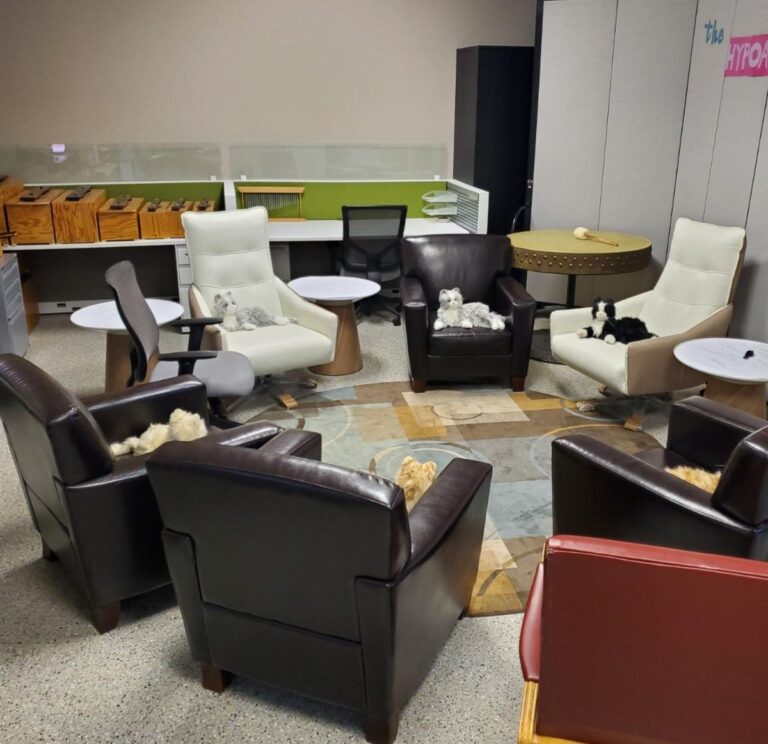
“But we all know how beneficial animal therapy is. So, to be able to hold one of the robotic cats and pet it and get that soothing response is a beautiful thing. Cats allow our participants to be in the role of nurturer, of caregiver, which is a very calming experience.
“One of our individuals here has such a violent history that he had to have a whole wing of the hospital to himself. They had to clear the halls when he was coming through because he was so incredibly violent. He did make progress over the years and he’s now in our New Beginnings program.
“I’ve actually seen him take one of these cats, when he thinks no one is looking. He’ll take it into a corner and just hold it, and pet it, when he thinks no one is looking.
“We have another gentleman who has superhuman strength in some ways. He can actually flip over these huge, steel picnic tables. It usually takes three men to lift these tables. He can flip over six tables in a row, like it’s nothing. He’s 65 years old.
“He needs a lot of sensory information coming into his body to even know where his own body exists. He doesn’t understand his own body boundaries. So, when he gets agitated, he starts pounding himself against walls,
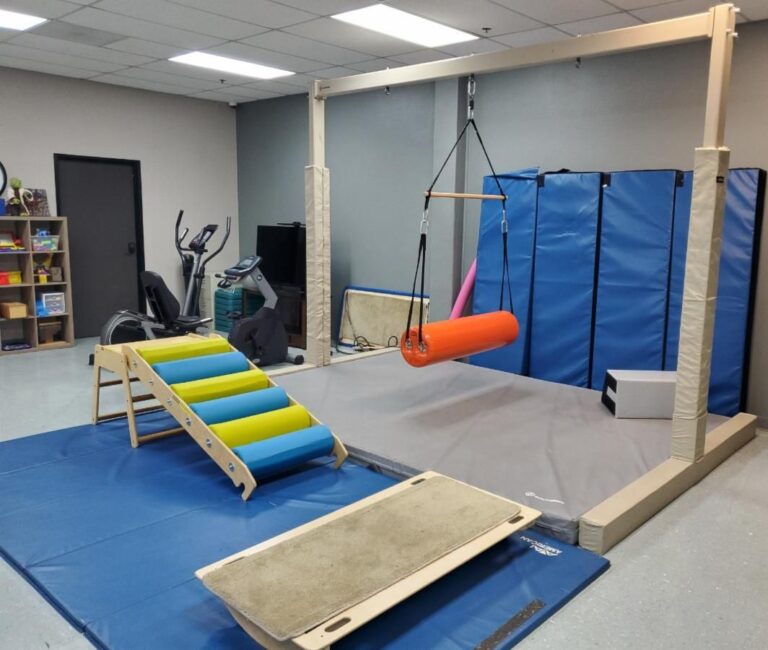
But we’ve been able to channel that, through occupational therapy, and by using the multi-sensory integration room – doing deep pressure tissue squeezes, weighted lap things, rocking in the sensory chair. When we get all that motion out, then we see a lot less of the really not appropriate behaviors that tend to be more destructive.
“Our philosophy here at New Beginnings is that we start our morning, before we even pick up our participants, with secular mindful practices. We do it as a team to practice our own emotional coping strategies, to set our intention for the day.
“Most of us are walking around the world reacting to anything that happens in a given moment. So, when we’re able to take that time, to be mindful, we can decide ahead of time what we want our experience to be.
“Our clients have lots of ups and downs. They have intellectual disabilities, mental health issues, medical issues. We’re all very complicated people, right? So, it’s been very helpful to see how well our clients are doing when we lead with a sense of calm. When we’ve already decided that, ‘I am calm and I’m going to do this when somebody gets agitated.’ Instead of just reacting and possibly making it worse.
“Our hope is to improve the quality of life of this group of individuals who really have never been afforded that chance in this society. We have a holistic program that enriches lives.
“And I think my most important lesson from all of this is gratitude. I mean, for the ordinary moments.”
Take a moment to relax and experience the
Multi-Sensory Room
at Mountain Shadows New Beginnings :
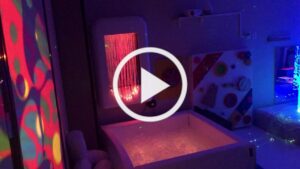
When you donate to Mountain Shadows Foundation,
you help advance the programs and services of
Mountain Shadows Support Group and Mountain Shadows Ancillary Services,
and help individuals with intellectual disabilities thrive.




